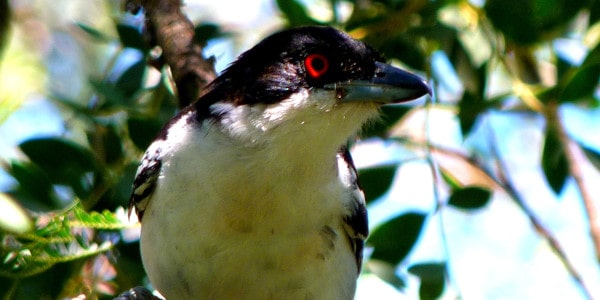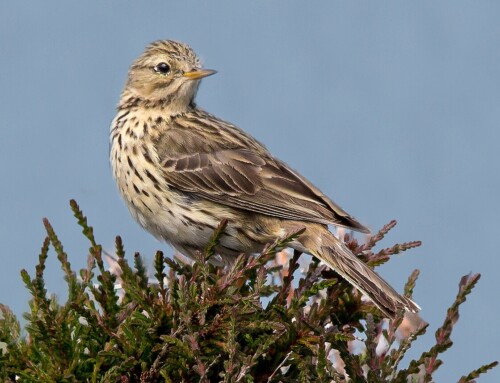LINKED PAPER
Avian responses to forest fragmentation during the breeding and non breeding seasons. Ernesto Gustavo Verga, Leonardo Galetto & Susana Inés Peluc. 2020. IBIS. DOI: 10.1111/ibi.12828. VIEW
Forest fragmentation threatens the persistence of several bird species all over the world. It is widely accepted that reductions in patch area or its isolation can lead to bird populations decline (Laurance et al. 2002). This pattern can be explained by different factors. For example, small forest patches tend to have reduced food resources, causing a decrease of bird population’s abundance. Similarly, enlargement of patch edges resultant of forest fragmentation may increase rates of nest predation and brood parasitism, etc (Zanette et al. 2000). However, factors affecting the response of bird populations to forest fragmentation can vary among seasons. For instance, nest predation and brood parasitism are processes that only occur during the breeding season. Moreover, daily movement of individuals vary drastically among seasons, even more in temperate or subtropical ecosystems. During the breeding season, birds are less mobile, generally being restricted to small territorial areas. Instead, during the non-breeding season, birds increase their traveling distance or the size of their home range (Lenz et al. 2015). Changes in bird mobility are very interesting. Why? Possibly because bird perception of a fragmented landscape can vary seasonally!
When we started investigating effects of forest fragmentation on birds in the Chaco forest, we were surprised by the few available studies that assess bird population responses to forest fragmentation during the non-breeding season. And even more, by the small number of studies comparing forest fragmentation effects between breeding and non-breeding seasons. Thus, we decided to take such approach in our study. We were particularly curious about whether there is a particular season in which bird species are more sensitive to forest fragmentation.
We conducted our study in a highly fragmented region: the south of Chaco Forest, in Córdoba, Argentina. This forest has lost more than the 85% of its natural habitats during the last 40 years (Hoyos et al. 2013). However, forest remnants still host a great diversity of birds (Dardanelli et al. 2006; Giraudo et al. 2006). This region has a seasonal weather, with wet and hot springs-summers and dry and cold autumns-winters (see Fig. 1).

Figure 1 These photographs show the great climate seasonality of the study area: a) a picture taken during the spring-summer wet season when birds breed, showing the vegetation with flowers and leaves; and b) a picture taken during the winter season (cold and dry) which is the non-breeding season of birds
The most consistent pattern of our study was that patch area reduction negatively affected bird abundance independently from the season (considering the overall abundance of the 28 species studied). However, when discriminating between forest and generalist bird species, only the abundance of forest species was negatively affected by patch area reduction during both seasons, whereas abundance of generalist species was not. So far, breeding and non-breeding seasons did not change population responses to forest fragmentation across the year at the assemble level. But, could new patterns appear if we analyze the population data for each species independently? We found that three bird forest species were more strongly affected by forest fragmentation during the breeding season than during the non-breeding season. We think that this strong pattern could be related with the increased mobility of the individuals during the non-breeding season, thus decreasing the negative effect of patch area reduction or an increase of patch isolation evidenced during the breeding season. Moreover, another factor to take into account in this context is the seasonality use of the agricultural matrix. During the non-breeding season, some agricultural stands do not have winter-crop production, and they are composed of stubble fields. This type of matrix can offer food resources, such as seeds and invertebrates, which are consumed by granivorous-insectivorous bird species (Moorcroft et al. 2002). The expansion of the foraging habitat area during the winter could ameliorate the negative effects of patch area reduction or isolation for some species, relative to the summer conditions when bird species tend to spend most of their time within forest patches for breeding.
Interestingly, no species or groups of species were negatively affected only during the non-breeding season. However, it should be noted that we have considered a local scale (patch area) and comparatively short distances in the landscape among forest fragments (patch isolation) to compare bird responses. Therefore, we cannot asseverate that for certain bird species their responses to fragmentation effects disappear (or are weaker) during the non-breeding season or actually they are responding to a larger, non-measured spatial scale. As usual, ecological research provides some answers, but opens new questions as: Does the spatial scale in which birds are sensitive to forest fragmentation vary among breeding and non-breeding seasons? This is an interesting topic to be studied in the future.
One of the take home messages of this study is that forest fragmentation can negatively affect bird abundance during both the breeding and non-breeding seasons, even for common species. So not only rare or threatened species may face the population risks of fragmentation. In addition, we highlight the critical situation that this ecosystem faces in terms of conservation, and the main results of this study is a call to preserve all the remnants forest patches because they are crucial as a biodiversity reservoir for many bird species and other organisms.
References
Dardanelli, S., Nores, M.L. & Nores, M. 2006. Minimum area requirements of breeding birds in fragmented woodland of Central Argentina. Divers. Distrib. 12: 687–693. VIEW
Giraudo, L., Kufner, M., Torres, R., Tamburini, D., Briguera, V. & Gavier, G. 2006. Avifauna del bosque chaqueño oriental de la provincia de Córdoba, Argentina. Ecol. Apl. 5: 127–136. VIEW
Hoyos, L.E., Cingolani, A.M., Zak, M.R., Vaieretti, M. V, Gorla, D.E. & Cabido, M.R. 2013. Deforestation and precipitation patterns in the arid Chaco forests of central Argentina. Appl. Veg. Sci. 16: 260–271. VIEW
Laurance, WF., Lovejoy, T.E., Vasconselos, H.L., Bruna, E.M., Didham, R.K., Stouffer, P.C., Gascon, C., Bierregaard, R.O., Laurance, S.G., Sampaio, E. 2002. Ecosystem decay of Amazonian forest fragments: a 22-year investigation. Conservation Biology 16: 605–618. VIEW
Lenz, J., Böhning‐Gaese, K., Fiedler, W. & Mueller, T. 2015. Nomadism and seasonal range expansion in a large frugivorous bird. Ecography 38: 54–62. VIEW
Moorcroft, D., Whittingham, M.J., Bradbury, R.B. & Wilson, J.D. 2002. The selection of stubble fields by wintering granivorous birds reflects vegetation cover and food abundance. J. Appl. Ecol. 39: 535–547. VIEW
Zanette, L., Doyle, P. & Trémont, S.M. 2000. Food shortage in small fragments: evidence from an area-sensitive passerine. Ecology 81: 1654–1666. VIEW
Image credit
Featured image: A male of Great Antshrike, Taraba major © Ernesto Verga




